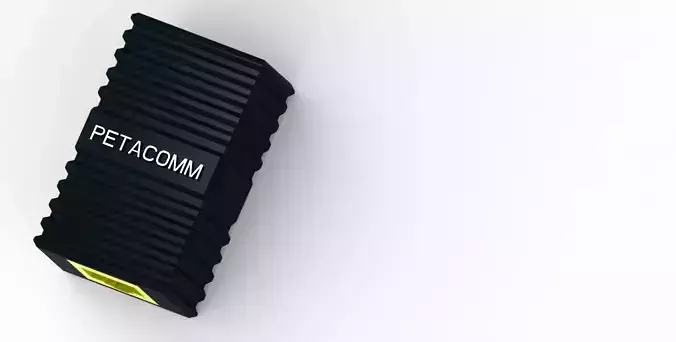1/3
The image before us presents a meticulously designed 3D model of an RJ45 connector, a staple component in all modern networked systems, which has been expertly crafted using Creo Parametric, a premier solution for 3D CAD modeling. The very existence of this detailed model, born from a powerful, parametric software like Creo, speaks volumes about the level of engineering precision and foresight that goes into even the smallest pieces of critical infrastructure.
Creo Parametric is renowned for its robust capabilities in creating complex geometries, ensuring that every curve, angle, and internal feature of this connector is defined with absolute accuracy. This is not merely a cosmetic representation; it is a functional digital twin, engineered to strict tolerances. The design work involves more than just shaping the clear plastic housing; it dives deep into the intricate alignment of the eight gold-plated pins (the 8P8C standard) that must precisely contact the corresponding wires within the Ethernet cable. Achieving this level of contact reliability requires managing manufacturing tolerances that are minuscule, a task for which Creo's advanced constraint and dimensioning tools are perfectly suited.
Furthermore, the model meticulously incorporates the essential latching mechanism—the small plastic tab that secures the plug into the female port (the jack). The design of this latch is a fine balancing act: it must be rigid enough to hold the connection securely, yet flexible enough to be repeatedly manipulated without breaking. This part of the design likely involved stress analysis simulations within the Creo environment to select the right material and geometry that guarantees both longevity and ease of use, ensuring that a simple broken tab doesn't lead to a network failure.
The creation of this connector in Creo is a crucial step in the Product Lifecycle Management (PLM) process. It allows designers to visualize the final product, run virtual assembly checks with other components, and prepare the necessary files for injection molding or 3D printing—the very process hinted at by the provided upload interface. The complexity of routing the eight twisted-pair wires into their correct T568A or T568B configuration within the tiny confines of the plug is first solved digitally in this high-fidelity model, mitigating potential production errors and streamlining the transition from concept to mass production. This 3D model, therefore, is the embodiment of advanced mechanical and electrical engineering principles, translated into the digital realm by the sophisticated tools of Creo.
REVIEWS & COMMENTS
accuracy, and usability.



